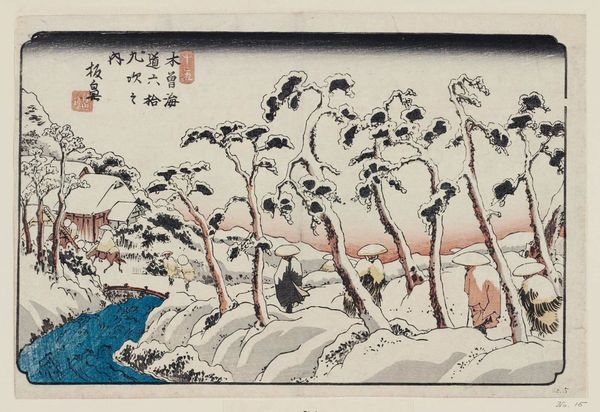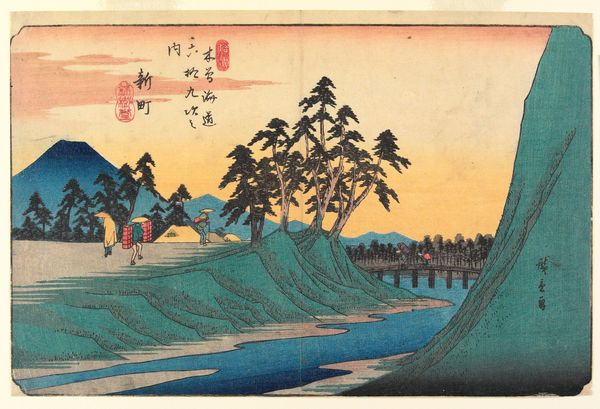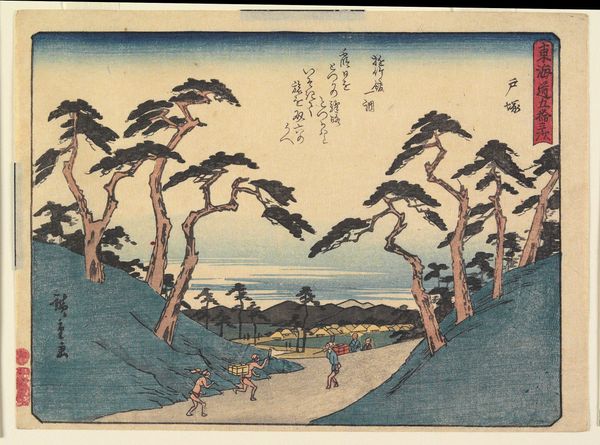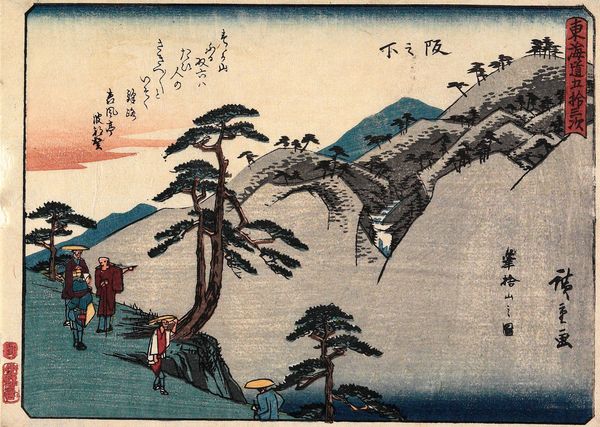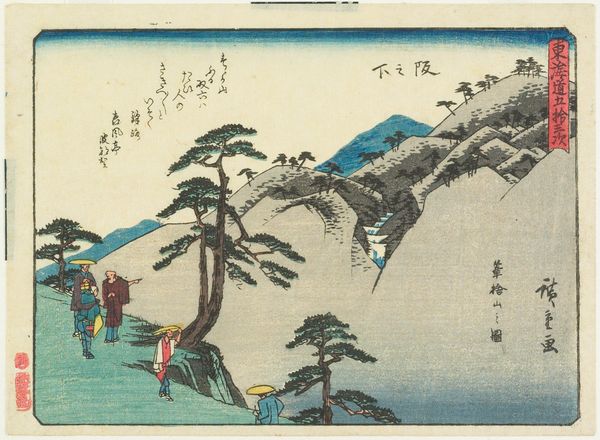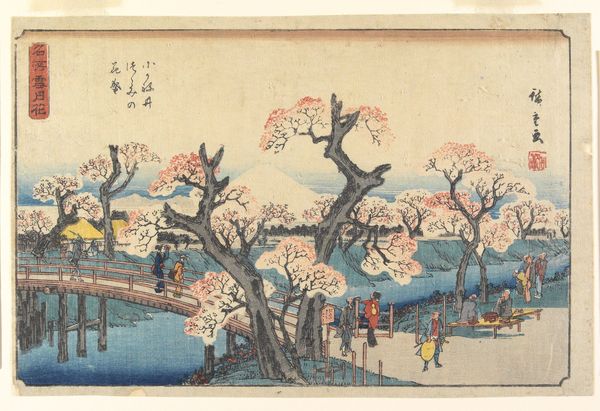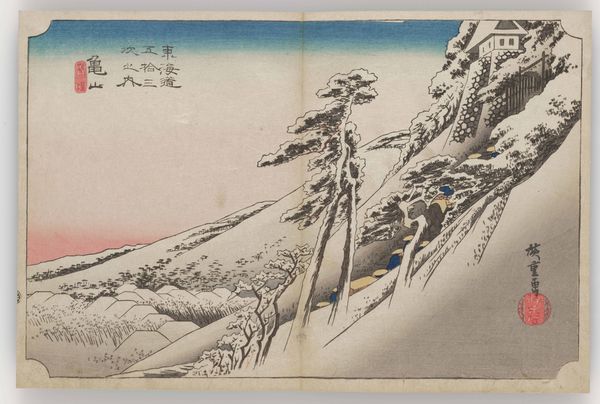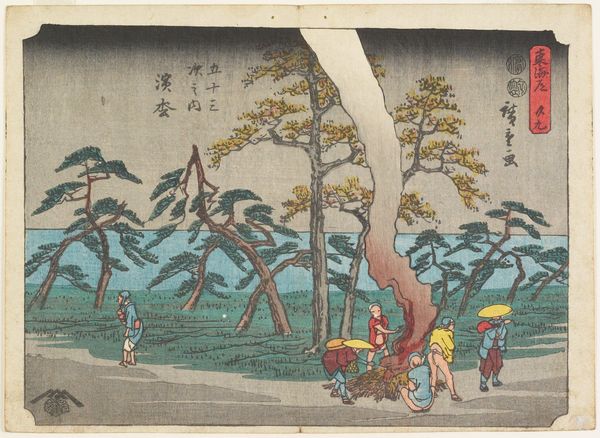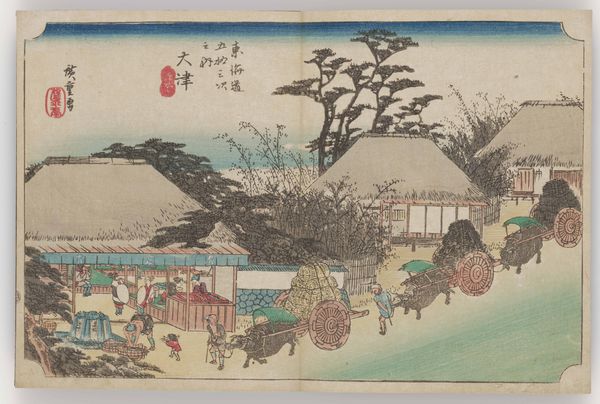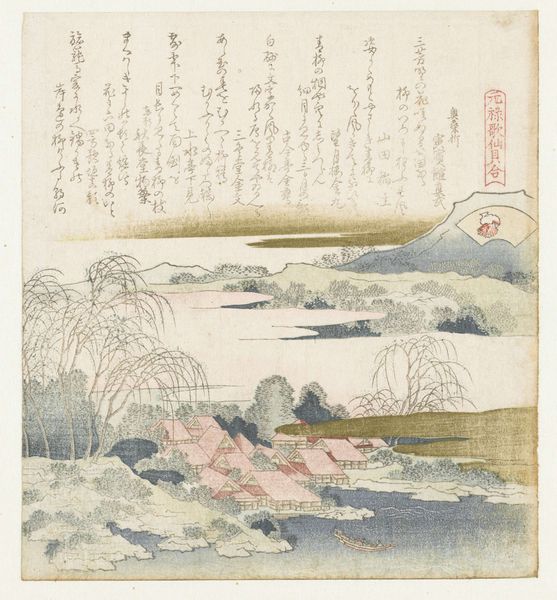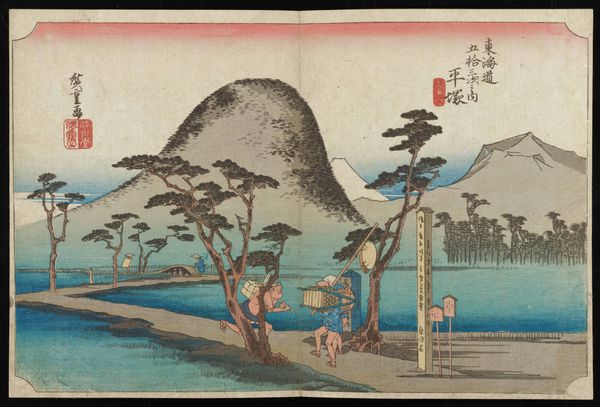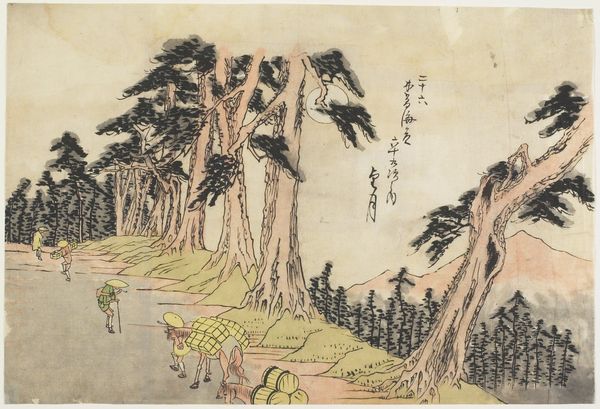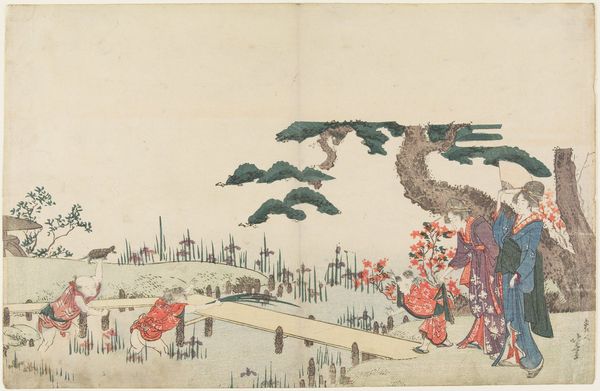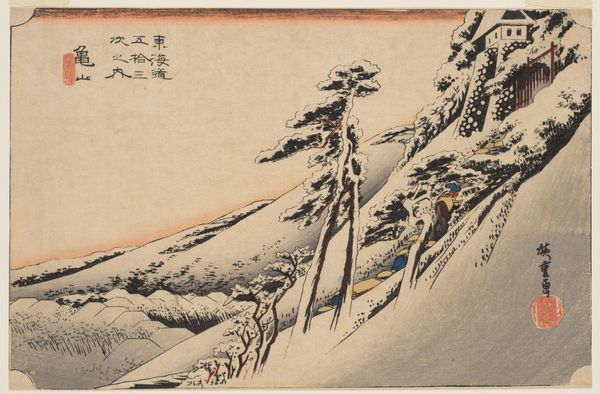
Dimensions: 8 5/8 x 13 1/2 in. (21.9 x 34.3 cm)
Copyright: Public Domain
Editor: This is "Itabana," a woodblock print by Keisai Eisen, dating from 1790 to 1848. It's a snowy landscape, quite beautiful but also austere. What catches your eye, looking at this? Curator: What fascinates me is how the artist manipulates readily available materials – wood and pigment – within the strictures of the ukiyo-e printmaking process, to produce an image so evocative of place and atmosphere. It raises questions about artistic labor, the economics of print production during this period, and how such readily reproducible images impacted Japanese society and the consumption of art. How do you perceive the materiality influencing the work's meaning? Editor: That's a really interesting perspective! I was more focused on the composition and how the figures relate to the landscape. So, you're suggesting we think about the physical making of this artwork as being integral to what it communicates? Curator: Precisely. Consider the collaborative effort involved. The artist, the woodblock carver, the printer, the publisher – each playing a role in the final product and each reliant on materials and resources readily available in Japanese society at the time. Ukiyo-e prints democratized art; what was previously the preserve of the elite was suddenly available to the wider populace through mass production and distribution. Editor: That's a great point about accessibility. It makes me wonder, how did the relatively low cost of these prints affect perceptions of art and its value? Curator: That’s a fantastic question! Ukiyo-e disrupted traditional notions of artistic value predicated on uniqueness and authorship, emphasizing instead replicability, distribution, and affordability. This challenges conventional hierarchies separating "high art" from popular culture or craft traditions. Editor: I've definitely learned to see the work in a totally different light, focusing on production and access as much as aesthetics. Thanks! Curator: And I am delighted to consider how mass production has influenced both artistic creation and public consumption!
Comments
No comments
Be the first to comment and join the conversation on the ultimate creative platform.
